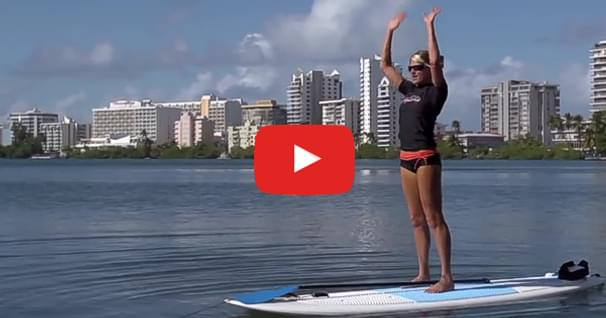Stretching for Paddling Longevity
If you're like me, you've heard that stretching is good for you-- that it reduces stiffness and helps to prevent injury. But it wasn't until recently, during my training as a yoga teacher, that someone actually explained to me why stretching prevents stiffness and injury. Now that I have some insight into our bodies and how they work I realize that stretching is even more important than I thought. If you want to feel more comfortable in your boat, develop more ease getting in and out of your boat, and want to paddle for many years to come, read on. Stretching can help, and I'll give you some reasons why.
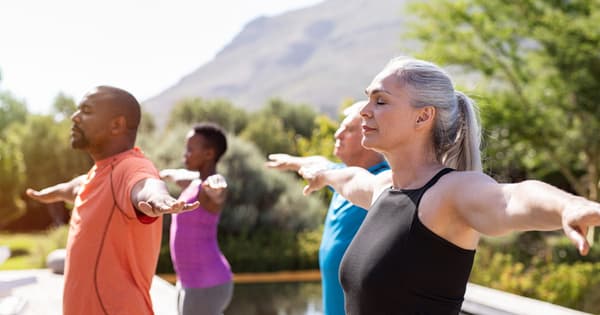
50 years of lightweight, maneuverable, high-performing kayaks.
Check out this interview with Tom Keane, Eddyline Kayaks Co-Owner, on their journey!
Fascia and Muscle Stiffness
Let's start by exploring something called fascia. Fascia is a layer of connective tissue that covers our muscles. It acts like shrink-wrap to hold muscles and muscle groups together and it naturally gets tighter over time. That feeling of stiffness that you feel in the morning when you wake up - that has a lot to do with the shrinking of the fascia overnight while you slept. Imagine what happens when you sit at your desk, in your car, in your kayak, and then go to bed without stretching or moving your body in ways that counteract the position of sitting. Your fascia will 'shrink' overnight and bind your muscles into the position that they are used in most. If you wake up in the morning and do the same thing over again, your fascia continues to bind and get more rigid. Over time, this will reduce your range of motion, make you stiff and less able to do things like get in and out of your kayak or even sit up straight in your boat.
We naturally get stiffer and lose range of motion as we get older, but when we stretch and move our bodies, we also stretch and move the fascia. This allows us to maintain greater range of motion, flexibility and suppleness as we age. Although we can't completely reverse the natural tightening of our muscles as we age, it is possible to increase flexibility at any age by stretching on a consistent basis. It can be as simple as doing 3 -4 stretches right after you get out of your boat or as involved as a regular yoga practice lasting from 30 to 90 minutes daily. Of course, the more dedicated you are to your stretching the more benefits you'll receive. The important thing is to stretch and move your body in ways that lengthen the muscles that you overuse and strengthen the muscles that you under-use.
Stretches to Prevent Pain and Injury
Our muscles are connected to our bones by tendons, so when we have certain muscle groups that are stronger than others, they can pull our bones out of alignment causing pain and injury. Instead of waiting for an injury to make you stretch, why not start stretching now to stay pain-free and healthy! For kayakers the most important muscle groups to stretch are the hip flexors and the shoulders. Essentially, we want to work on opening the front of the body to counteract the position of sitting in our kayaks and paddling forward.
Some simple stretches that are easy to do right after you get out of your boat are lunges and thigh stretch. Both help to open the front of the hips.
Low Lunge:
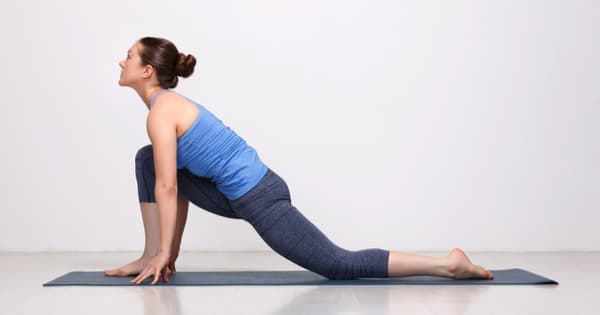
- From standing, step your left leg back to take a wide stance. Bend your right knee (the front knee) over the ankle. This is important! You don't want your knee to be over your toes. If your knee is over your toes you'll want to move your right foot forward so that when you bend your right knee it's directly over your ankle.
- Place your left knee on the ground and point your left toes.
- Keep your hands on the ground beside your front foot or on your knee.
- Hold for 10 -20 seconds and make sure to breathe deeply while you stretch.
- Switch to the other side and repeat.
High Lunge:
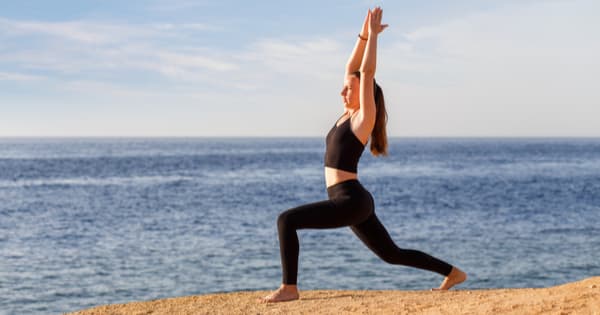
- From standing, step your left leg back to take a wide stance. Bend your right knee (the front knee) over the ankle.
- Lift your left heel off the ground. You can straighten your left leg or keep a soft bend in the knees.
- Lift your arms up over your head, lift the chest and stretch through your fingertips.
- Hold for 10 -20 seconds and make sure to breathe deeply while you stretch.
- Switch to the other side and repeat.
Thigh Stretch:
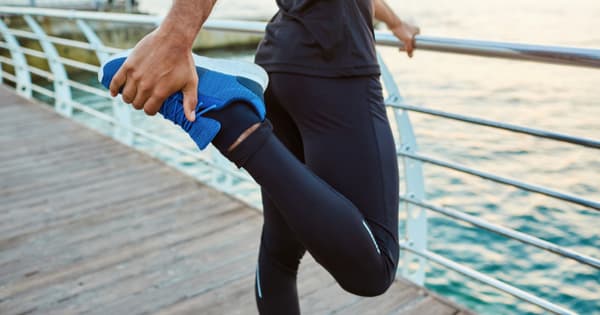
- From standing, grab your right foot and gently pull it to your right buttock. You should feel the stretch on the front of your thigh.
- Keep your knees as close together as possible. Don't pull up or back on your ankle or foot. You can press your foot into your hand.
- Hold for 10-20 seconds and breathe.
- Switch sides and repeat.
It's important to stretch on a regular basis. If you want to delve deeper into stretching, I highly recommend finding a good yoga class near you. It's important that you try out different classes to find the right one for you. There are many different kinds of yoga and the first class you go to may not be the one for you so don't give up too easily. Experiment with different teachers and classes before you write it off.
Happy Paddling and Happy Stretching!
Anna Levesque is a world-class kayaker who has a passion for inspiring and teaching women. Her experience as an accomplished international competitor, author, instructor and business owner has placed her as the leading expert in her field. Her top accomplishments as a whitewater athlete include a bronze medal at the 2001 World Freestyle Kayak Championships, a spot on the Canadian National Freestyle Team five years in a row, and many top 3 finishes in both Freestyle and Extreme Racing. Anna combines her international expertise in kayaking with her experience as a yoga instructor and student of meditation, to inspire women in confidently creating success and happiness in all aspects of their lives. She offers women's paddling retreats, clinics and trips in Mexico through the her company, Girls at Play, and the Nantahala Outdoor Center. For more information please visit www.watergirlsatplay.com
Related Articles
During this video we'll do a quick demo of 8 exercises and lay out a basic training plan for you to…
Fitness for paddling has been on my mind a lot lately and I thought maybe my story on why I've been…
This is Jodelle Fitzwater with Bic SUP, and this episode is all about cardio. We're gonna get you…
As an instructor I try to provide experiences that simulate more difficult conditions while still being…



